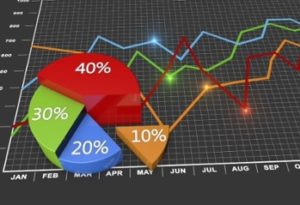Many captains before you have abandoned ship, fearing the tall waves of the “Market Sea” crashing down upon them. They succumbed to the dreaded Sirens and their song, “Uncertainty! Uncertainty!”
If only they had heeded the words of the Market Sages: “Stay the course! Batten down the hatches and hold on to the wheel, because after the storm, there is always blue sky.”
Comparing financial markets to the sea is cliché. But how many times have you pulled away from a fund in fear and later realize you should have hunkered down and weathered the storm? Often, the best days in the market follow the worst. (It’s always darkest before the dawn, as they say.)
Did you miss the 10 best days in the past 10 years in the market? We’re here to catch you up:
June 24, 2016: The FTSE 100 traded on the London Stock Exchange, became unstable, and declined for 5 days straight. This was caused by the Brexit Referendum, as uncertainty about Britain’s status in the European Union caused investor panic and crashed markets around the world, losing the equivalent of two trillion U.S. dollars. By June 29th, most markets had recovered; in the U.S. the Dow Jones Industrial Average was up 1.6% and the VIX, a gauge of fear in the market, settled back down to a reasonable number.
August 25, 2015: It looked like the financial markets were going to see a rally, but that was not the case – at the start of the day, the Dow was up over 400 points; at the end of the day, it was a dismal 200 points under. On the next day, August 26th, fears were high as the markets showed the same symptoms as the day before, but the markets surprised many and finished on an upswing. In fact, the S&P 500 saw its best day since November 2011, finishing with a 3.9 percent gain.
December 18, 2014: Hurray for the Santa Rally! The cost of oil had been dipping most of December and was threatening to drag the markets down with it. Luckily, a Fed announcement of lowered interest rates caused the Dow to shoot up 421 points – its highest one-day gain in three years.
Hurray for the Santa Rally! The cost of oil had been dipping most of December and was threatening to drag the markets down with it. Luckily, a Fed announcement of lowered interest rates caused the Dow to shoot up 421 points – its highest one-day gain in three years.
November 30, 2011: The Fed announced that it would provide lower interest rates to Central Banks in Europe. These banks, in turn, would be able to offer cheaper loans to struggling European nations.
Before markets opened on the same day, ADP, a payroll processing company, said employment in the U. S. had increased by 206k jobs. The announcement came two days before the U. S. government’s own report on employment; early figures from ADP coupled with the Fed’s help to the Euro-Zone caused markets to surge worldwide. Western markets closed with 4% – 5% increases.
March 23, 2009: Nearly a year after making a $200 billion loan to failing banks, the government declared that they were going to pump another $1 trillion into the private sector. This saw the biggest rally in stocks since 1938 with the Dow closing at 497 points over and the S&P 500 up over 54 points.
In 2008, we saw the sub-prime crisis pop the bubble on the housing market. The collapse didn’t happen overnight; most actions that caused the crisis actually occurred in 2007. Financial markets flopped up and down as the story of the sub-prime loan crisis unfolded. During the calamitous year, there were 5 days that made holding on worth the effort:
- October 28: This was the second best day in 75 years, with a gain of 10.9% on the Dow Jones Industrial Average.
- October 13: Upon news of aid to banks, stocks on the Dow rose 11%. This was the largest one-day percentage gain in 75 years.
- September 18: By now, the story of the sub-prime crisis had fully unfolded; the Dow jumped more than 410 points. (The day before had seen a loss of 449 points.)
- March 11: The Fed made their first attempt at shoring up the banks with a $200 billion loan. Stocks on the NASDAQ jumped 4% after an eighteen-month slump.
- March 18: Many believe this day was a turnaround point to the crisis and that the worst had been avoided. Faith in the $200 billion Fed loan bolstered hopes, and the Dow closed 21 points ahead.
Financial markets will always have recessions and dips. Riding out the storm takes patience. Greg Ostrowski advises, “… look at the data; it’s been proven that in a time of market volatility, a consistent approach has been more successful than trying to time the market.”
Most investors are terrible at trading – they panic when the market drops, sell their shares, and watch from the sidelines, expecting a crash and burn. This, as we mentioned earlier, is a bad idea, because some of the biggest upswings often occur right after steep market drops.
For example: if an investor stayed fully invested in the S&P 500 from 1995-2014, they would have a 9.85% annualized return. For those who panicked and chose to opt out of the market – even if they missed only the 10 days listed above – their annualized return would drop to 6.1%. (You can read the full Business Insider article here.)
The lesson history teaches us is one of patience: stay the course and you’ll make more money. Contact us to learn more about long-term investing strategies, retirement planning, and managing your finances.
